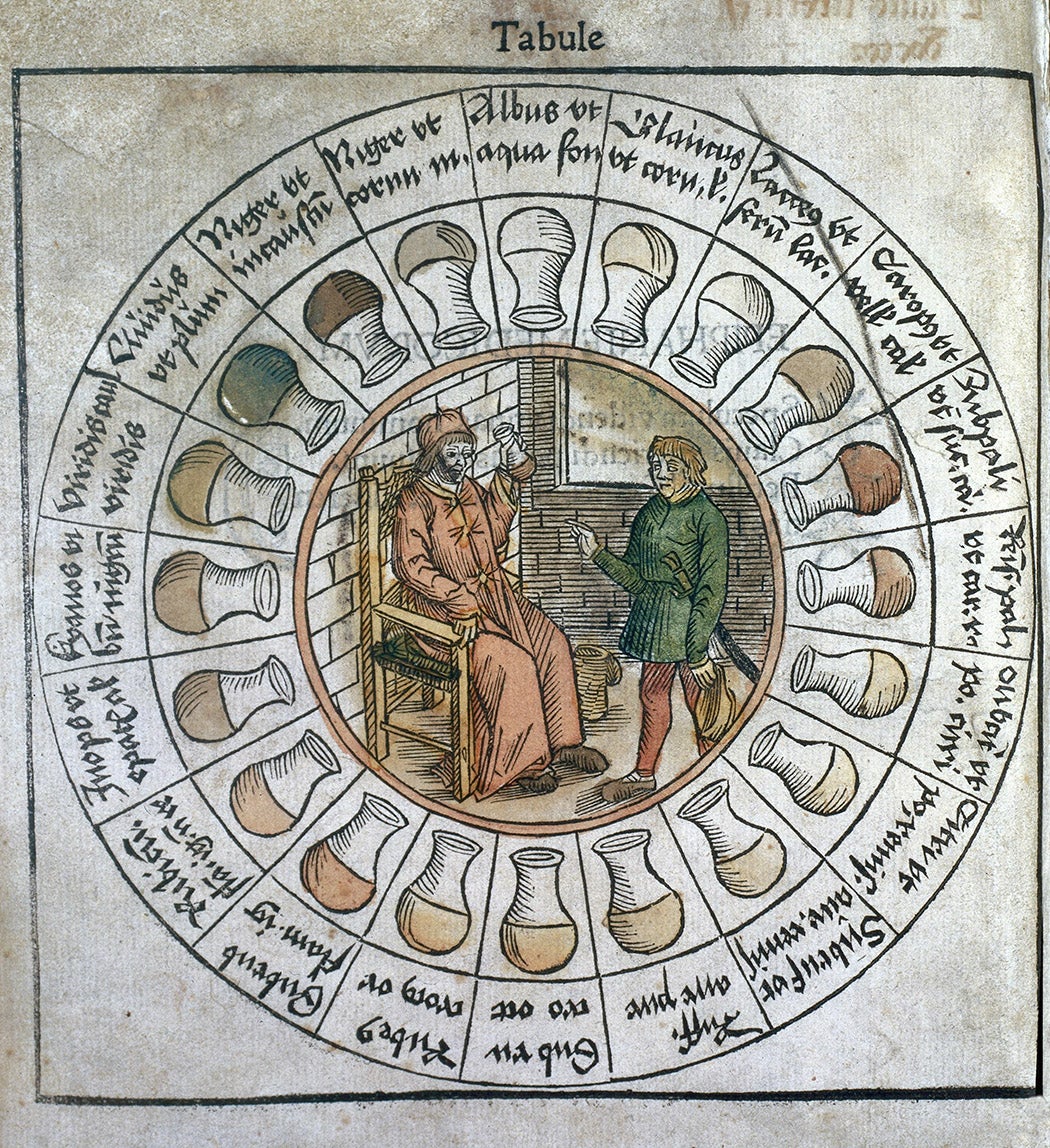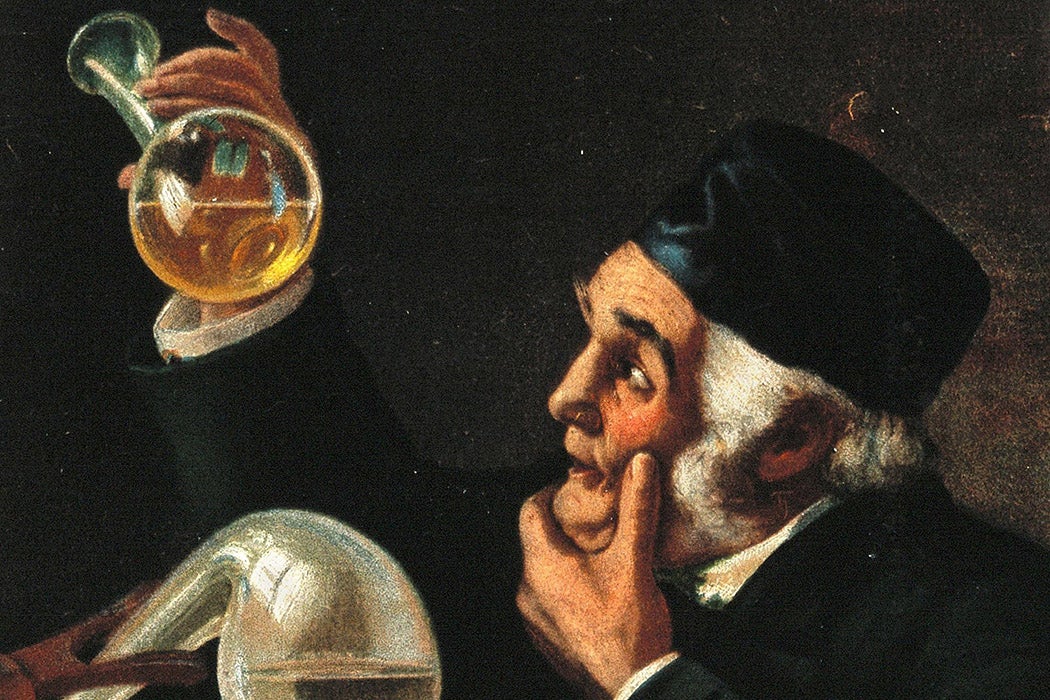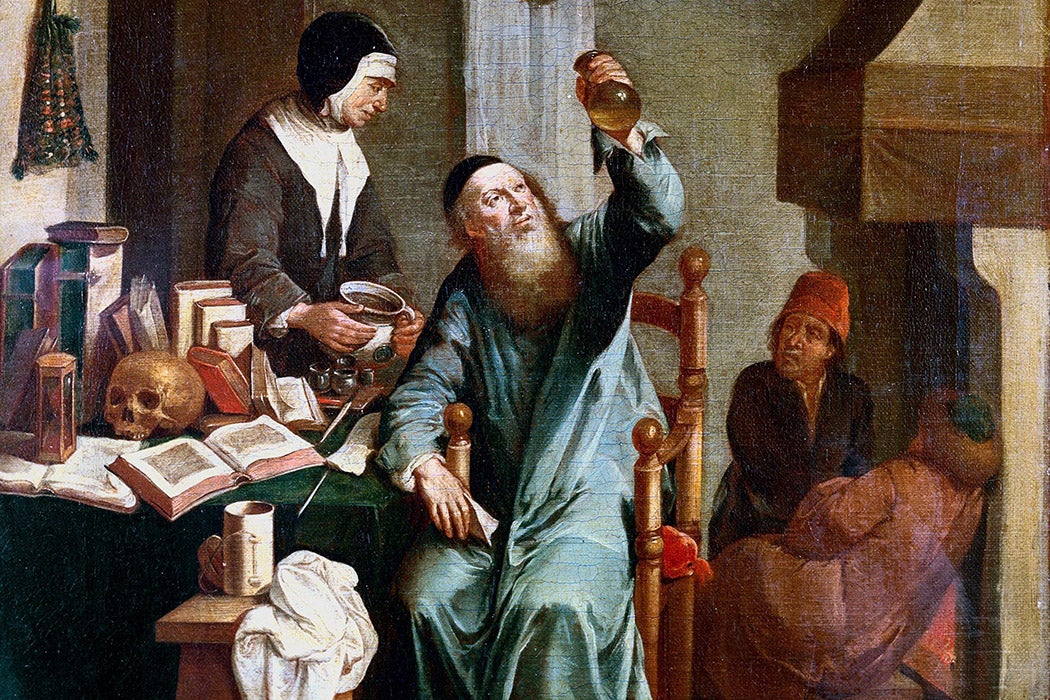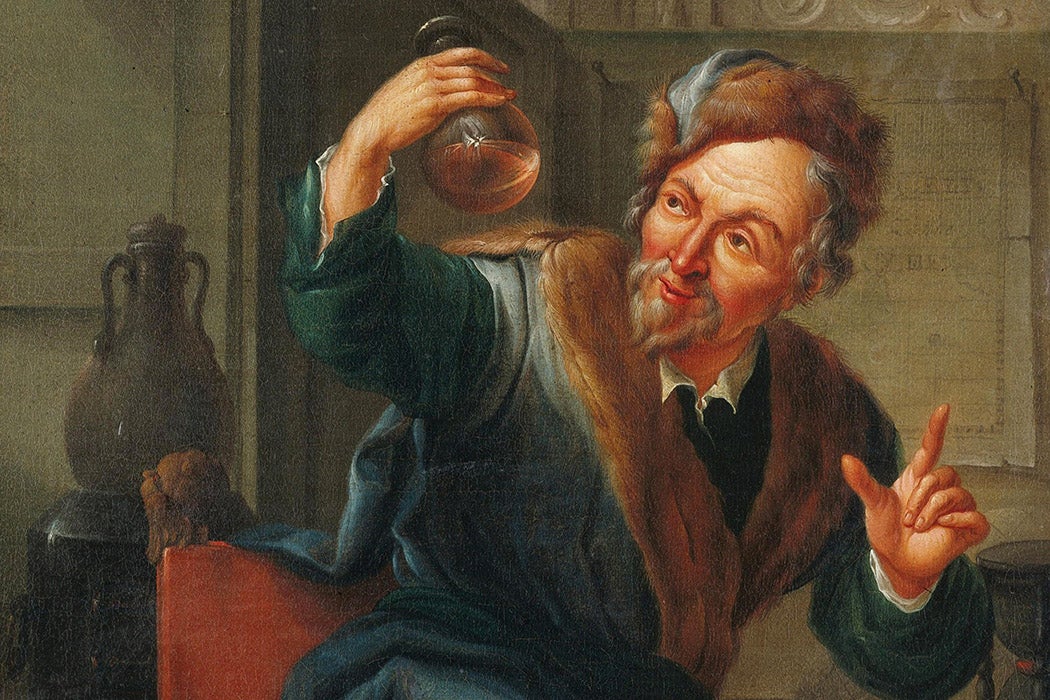Uroscopy, in early schools of learned medicine, was a diagnostic tool to be used in conjunction with conducting thorough examinations and speaking with the patient. By the thirteenth century, something went awry.
Imagine the following scene: Someone shows up at a medieval physician’s door with a flask of urine—not their own, necessarily. They foist the flask into the hand of a physician and demand a diagnosis. They decline to provide any details about the patient or their medical complaint, not wanting to muddy an objective science with such trivialities. This bizarre scene is a composite of physicians’ writings at the time, not a literal account, but for a time, uroscopy—the medical examination of urine—was considered the pinnacle of an objective diagnostic tool. From the thirteenth through the sixteenth century, and sometimes beyond, quick urine-based diagnoses and treatment protocols were resoundingly demanded by patients and their loved ones.
According to Michael Stolberg, a historian of early modern medicine, many physicians grew to revile the practice. It was too obvious when they were wrong—when a urine-based diagnosis of imbalanced humors was in fact a pregnancy visible to all a few months later, or a prognosis of imminent recovery was met with death instead. Yet in certain regions of medieval Europe, especially German-speaking areas, the practice was seen by the common people as conveying the rare, special skills of a physician. Where the people saw only pee, physicians could infer all manner of ailments. A physician that hesitated to diagnose a patient based off urine alone might be perceived as unskilled.
Uroscopy was first record in the fourth millennium BCE and became common practice in the fifth and fourth centuries BCE, recognized for its utility as one component in a physician’s diagnostic repertoire. By the thirteenth century, the practice had been imbued with a perception of prestige and infallibility. There was hardly a “greater source of glory” to a medieval physician than the study of urine, wrote Andreas Leennius, himself a medieval physician. Not only could precise diagnoses be made, but the patho-physiological pathway behind the ailment could even be thoroughly explained, simply by looking at pee.

Illustrated charts from medical treatises offer handy tips on interpreting the color, consistency, and sediment of urine. Perhaps due to its simplicity, and the logistical ease of not needing to examine the patient directly, should they be bedridden or a day’s ride away, the practice of uroscopy became quite popular. Once it was commonplace, “plebians” began to hold it in high regard, even when physicians themselves maintained doubt. Perhaps there was something theatrically satisfying about a learned man waving around a flask of pee, looking at it from all angles, sniffing it, and making bold proclamations.
Any hesitation on behalf of physicians was seized upon by charlatans and empirics. (Medical licensure was still a few centuries away.) The charlatans had no qualms about gazing into the yellow liquid, gesticulating wildly, and making exact diagnoses and treatment recommendations on the spot—for a fee, of course. This sort of performative certainty was reassuring to people at a time when true anatomical knowledge remained scant.
Physicians were put into a bind: acquiesce to the demands to diagnose based off uroscopy alone, and risk being wrong, or lose the patient to a charlatan who would do what they were unwilling to do themselves. There was an even worse outcome, deeply dreaded at the time, “…[P]hysicians had to keep in mind that people might want to test their skills or, even worse, outright make fools of them by [substituting] wine, whey or animal urine [for urine].” With one’s reputation being of the utmost importance, it was a nightmare scenario:
[T]he urosceptics, [those skeptical of uroscopy], reported stories of physicians who became the laughing stock of the whole area after they had been tricked into diagnosing diseases from Malvasian wine and then watched open-mouthed as the patient or carrier drank the alleged urine with the greatest pleasure.
Michael R. McVaugh recounts how whole chapters of treatises guide physicians how to avoid being bamboozled by prospective uroscopy clients. By dipping a finger in the liquid discreetly and pretending to blow one’s nose, physicians could ensure the liquid passed (or failed, perhaps) the sniff test. Another fail-safe of the era was to stare intently at the courier who delivered the urine, trying to elicit a blush that would indicate they were engaging in deceit. When all else fails, medieval physician Sigerist writes, “…say that he has an obstruction in the liver… particularly use the word, obstruction, because they do not understand what it means, and it helps greatly that a term is not understood by the people.” How could they be wrong if they were simply not understood?
Weekly Newsletter
Precarious diagnostic ability aside, it was humiliation that finally rallied physicians to begin opposing patients’ demands. Those who continued to engage in the practice were hurting the profession for they, “helped perpetuate the deeply rooted belief in the outstanding diagnostic possibilities of uroscopy.” To disabuse people of the notion that diagnosis based solely on urine was possible, the physicians were forced to unite. A formal campaign against uroscopy commenced. The charlatans who continued to perform uroscopy wantonly were derided as “deceitful piss mongers,” and the hold-out physicians as having “prostituted” themselves.
In the seventeenth century, Thomas Willis became the first person to record the sweet taste of urine in patients suffering from diabetes, though he may have just been the first to publicly admit to tasting pee. Unfortunately, his scientifically-sound discovery, based in uroscopy, coincided with a rapid decline of the practice. The physicians’ campaign was eventually successful; no longer was uroscopy seen as the first-line tool for arriving at a diagnosis. Yet the practice continued on a smaller scale for another two centuries.












